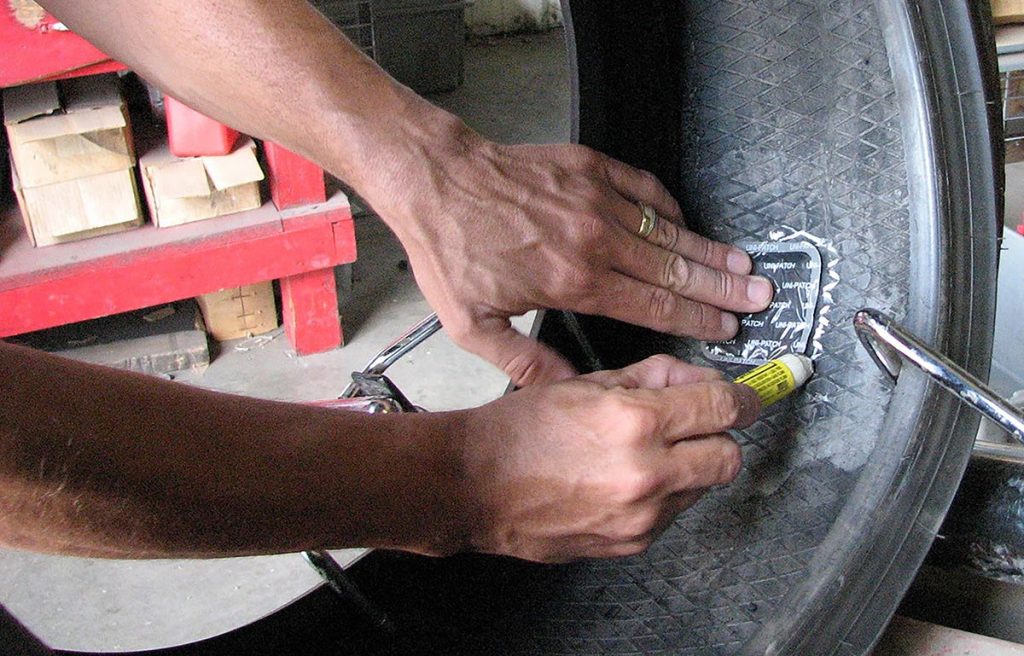One of the problems you can encounter when traveling by car is a punctured tire. Using a patch is a fairly common option to work around this issue.
Yet, if the hole is in a position like a tire wall, the problem becomes much more complicated because it is likely that the defensive position will not be patched.
So, how close to the sidewall can a tire be patched? A distance of 6 mm or more from the tire shoulder is required to fit a patch. In other words, if a crack is closer than 6mm, there’s almost nothing you can do about it!
Tire Sidewall OverviewFirst, let’s learn about sidewalls and how to identify them on your tires.
The wall is the rubber part from the outer edge of the rim to the road surface. This part also has the largest area, is the most flexible, and continuously deforms under loads when moving.
How Close To Sidewall Can A Tire Be Patched?As you know, the car’s wall is in a particular location, so it is pretty challenging to troubleshoot the hole here.
Manufacturers also recommend that you not choose the patch option if the spot is on the side of the vehicle or too close to this position. Then, how close to the sidewall can a tire be patched.
You cannot use the patch if the hole is close to the wheel with a gap of less than 6mm. In addition, you should note that if the hole is more significant than ¼ inch, the patch should not be used. In this case, if the patch is small, it cannot cover the hole, causing the wheel to deflate still when moving.
On the contrary, using a large patch can make the wheel more bulky, difficult to move, and unsafe.
Fix Sidewall DamageOther Related QuestionsTo better understand the problems that occur with the tires and how to overcome them effectively, you can refer to the following information.
We’ve put together some frequently asked questions that may help answer your questions on this topic.
Plug a flat tire: Is it possible?People are often concerned about whether it is safe to plug or patch a flat tire.
These two options are pretty standard in repairing or overcoming the problem of flat tires caused by rolling nails or other sharp objects.
The manufacturer still recommends that you better replace the tire with a new one when there is a problem because repairing with a plug or patch when a flat one is not a safe solution.
Yet, the cost of new tires is not cheap, and if you have this problem often, it is a big problem. So, many drivers use a plug or patch when a wheel is punctured.
There is a limit to the number of nails or patches on a product. You can use this option to temporarily fix the problem if you find a few small holes. If the wheel has many large holes or previous patches, it is best to replace it with a new one.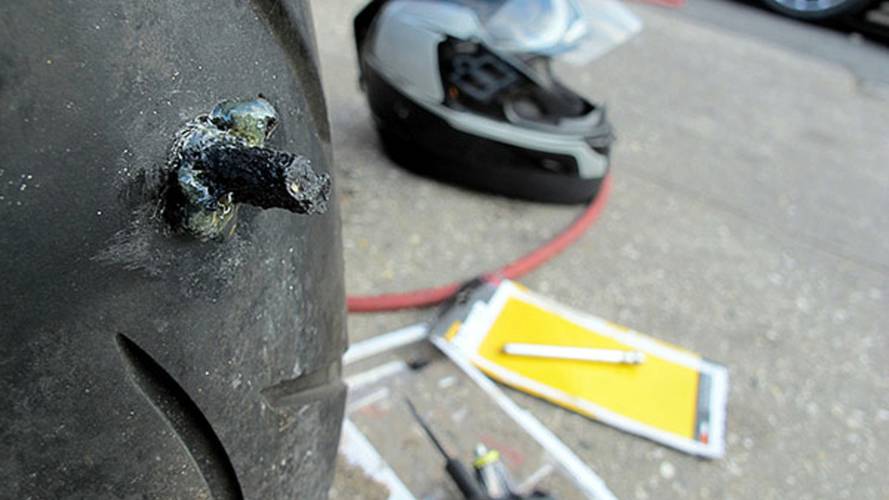
For a detailed guide, check out this video:
How close can a tire patch be to another patch?The gap between patches is also a topic that people are very interested in. When traveling on the road, you may encounter a flat one many times.
As you know, when the tires have had previous patches or punctures in close locations, it is better to replace them. In case
Can you patch a tire on the side of the road?In the case of a puncture on the tire side, the use of stickers is unlikely to have as much effect as you think.
The reason is that its wall adhesion is so thin that relatively few materials can adhere. More specifically, damage to the sidewall will seriously damage the structure of a wheel.
More specifically, damage to the sidewall will seriously damage the structure of a wheel.
The solution to this problem is to insert an extra tube inside the wheel to ensure that you can still turn the whole thing.
How fast can you drive on a patched tire?A patched one will not achieve the same speed and performance as it once was. Therefore, the optimal level you can expect from such a version will not be more than 85 mph. Of course, this is just the limit that many manufacturers recommend, but you should not overdo this limit.
Can you patch a tire with 2 nails in it?The answer is yes! It’s just that the gap between the two punctures is at least 16 inches, and you might seal them with two large patches.
According to many manufacturers, the maximum number of times performed is two times. If more than that, it’s time to get a new one.
ConclusionAs such, a puncture in the side of the vehicle is a unique location where patching is not an optimal solution in this case. It would help if you changed to a new tire to ensure safety when traveling.
It would help if you changed to a new tire to ensure safety when traveling.
Thank you for following this post!
This post was last updated onTires can get very expensive. I drive a Range Rover Sport with 22-inch, low-profile tires that cost ~$450 after-tax to replace each. So when I got a nail in one of my tires, I was perplexed. Plug, patch, or replace tire?
Luckily for you and most others, tires generally cost under $200 each to replace, and more like closer to $150.
With the average tire size closer to 16-inches, there’s a lot more manufacturer options.
But still, $150 – $250 a tire is costly, especially since you usually need to replace at least two tires if one tire gets badly damaged so that both sides match.
You do not want to have one new tire on one side, and one old tire on the other side due to unevenness of wear. Further, if your car has differential breaking / anti-slip technology, you want perfectly even tires.
Further, if your car has differential breaking / anti-slip technology, you want perfectly even tires.
I thought my only two choices were to plug or replace tire. Turns out there are three fixes for a tire: 1) plug only, 2) plug and patch, and 3) replace tire.
In general, you can plug the tire if the nail or puncture in the tire is in the 60% MIDDLE of the tire. Industry experts consider this a temporary fix, but many drivers try to make plugging a permanent position until they have to replace the tire when the wear is at 3/32 or less.
The cost for an auto technician to plug is about $15 – $20. It is the cheapest option.
The closer the puncture is to the sidewall, the riskier it is to plug only or plug and patch the tire. The integrity of the tire is most important in the sidewalls.
The greatest potential danger caused by a plug repair is that this type of repair allows air and moisture to penetrate the body of the tire.
The tire industry maintains that air and moisture slowly seep in between the layers of the tire allowing the steel belts to degrade and causing the tire to deteriorate and corrode from within.
Over time, this corrosion weakens the steel belts and the bonds between the rubber-to-rubber layers and rubber-to-the-wire layers of the tire, greatly increasing the risk of a tread separation.
It is NHTSA’s position that a combination repair is the only way to properly repair a tire puncture. A combination repair consists of a repair patch with a rubber plug/stem attached to its center and a plug.
After a puncture is located, it is reamed out to create a clean hole for the plug. The area around the puncture on the inside of the tire is then prepared to bond with the patch.
Vulcanizing cement is applied to that area and to the patch/plug combination. The plug is pulled from the outside of the tire through the reamed hole so that it completely fills the hole and created a tight seal with the rubber of the tire.
The patch bonds to the inside of the tire, preventing air from escaping with the plug seals the puncture hole preventing air form escaping while the plug seals the puncture hole preventing air and moisture from invading the tire. The rubber stem is trimmed to be even with the surrounding tread.
The cost of a plug and patch costs around $40 – $50, but it’s a safer solution.
Nobody wants to replace a new tire or newish tire with plenty of tread still left. But the reality is that your tires are your most important automotive part. They are the only automotive part that touches the road.
Some might say that new tires are some of the cheapest life insurance you can buy! If you have family or loved ones who regularly ride with you, it’s best you replace two tires for safety reason.
Not replacing your tire is simply delaying the inevitable if you plan to own the car for many more years and many more miles.
You’ll feel great knowing that you have new tires that provide maximum traction and safety.
Below is a picture of a nail that punctured my 22-inch tire. As you can see, it’s very close to the sidewall. The tires have 19,000 miles on them. Similar low profile tires have a tread life of around 20,000 – 25,000.
I tried to take out the nail and automatically heard a hissing sound. As a result, I took it to my local auto repair shop to see if I could get it plugged for $20.
He responded, “The nail is too close to the side wall to have it properly plugged. We recommend getting new tires.“
I was disappointed with what I heard, but I told them to go ahead and order two new tires anyway because safety first. The puncture happened during the rainy winter season.
After spending $878 for two new rear tires, I felt at ease with my decision. Because the tires would take a couple days to arrive, I asked the technician to inflate my tire with the nail to hold me over.
Then he responded, “It’s better I plug the tire as it’s not good to drive with a nail in it.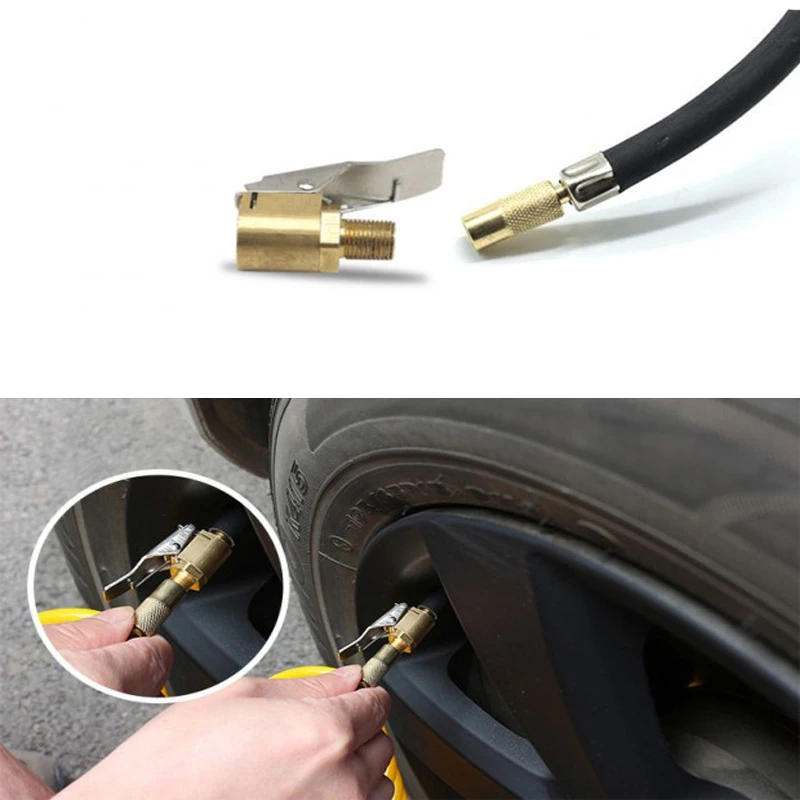 I’ll do it for free.“
I’ll do it for free.“
Wait a minute! He just said that plugging a hole so close to the sidewall was not recommended, and here he was doing it. Was I getting scammed?
He explained it was all relative, and that plugging would be safer than driving with the nail in it, so I agreed.
If the choice is between driving with a nail in a tire and plugging a tire, always at least plug the tire. A nail can start tearing up the integrity of the tire and cause extreme damage while driving.
Below is a picture from @Cosimo_Medici1 on Twitter of what may happen if you drive with a nail in your tire. Don’t do it!
Below is what a plugged tire looks like. He removed the nail, takes a tool and punctures a bigger hole into the tire. Then he gets the adhesive gunk and rams it in the hole. The friction and heat of the tire cures the gunk.
If you look closely, the side of my tire are pretty worn, hence why I really wouldn’t be comfortable driving much more than 2,000 – 3,000 miles on the tire before wanting to replace.
The thing is, I only drive about 4,000 – 5,000 miles a year, so I would have had a good six to nine months more of usage out of my tires. Oh well.
As I got to thinking about this plug or replace tire dilemma, I came to realize this decision is all based upon one’s financial well-being.
If you have all the money in the world, then you would ALWAYS just replace the tire and the one on the other side at the very least.
Jeff Bezos isn’t wondering whether he should plug or plug and patch the punctured tire. He’d replace all four tires every single time!
If you’re living paycheck to paycheck without a nice cash buffer like we discovered some 80% of Americans do during the government shutdown, then you’re probably going to plug the tire for $20, even if the puncture is very close to the sidewall and risk a potential blowout.
Therefore, everybody needs to do their best to boost their savings and their income, especially if you have a family to take care of. It’s not worth risking your life or your loved ones lives to save several hundred dollars.
It’s not worth risking your life or your loved ones lives to save several hundred dollars.
There have been eight figure litigation verdicts against improper repairs after victims were seriously injured or killed.
I’ve been super frugal all my life, hence why I deliberated on this decision. But I really only deliberated for 10 minutes until I decided to spend the money on two new rear tires after everything was explained to me.
I bought a luxury vehicle mainly for safety first. I’m not going to then cheap out by plugging 19,000 mile old tires instead of getting new ones.
When in doubt, replace your tires. You’ll feel better once you do, especially if you’re driving around a family.
Related: The Safest Cars And SUVS To Survive A Crash
Real estate is my favorite way to achieving financial freedom because it is a tangible asset that is less volatile, provides utility, and generates income. By the time I was 30, I had bought two properties in San Francisco and one property in Lake Tahoe. These properties now generate a significant amount of mostly passive income.
These properties now generate a significant amount of mostly passive income.
In 2016, I started diversifying into heartland real estate to take advantage of lower valuations and higher cap rates. I did so by investing $810,000 with real estate crowdfunding platforms. With interest rates down, the value of cash flow is up. Further, the pandemic has made working from home more common.
Take a look at my two favorite real estate crowdfunding platforms that are free to sign up and explore:
Fundrise: A way for accredited and non-accredited investors to diversify into real estate through private eFunds. Fundrise has been around since 2012 and has consistently generated steady returns, no matter what the stock market is doing. For most people, investing in a diversified eREIT is the way to go.
CrowdStreet: A way for accredited investors to invest in individual real estate opportunities mostly in 18-hour cities. 18-hour cities are secondary cities with lower valuations, higher rental yields, and potentially higher growth due to job growth and demographic trends. If you have a lot more capital, you can build you own diversified real estate portfolio.
If you have a lot more capital, you can build you own diversified real estate portfolio.
Looking for affordable car insurance? Check out Allstate. They are one of the most trusted insurance companies around. Getting a quote is free and easy. Make sure you have the best auto insurance possible to protect you and your family.
It’s worth spending a moment filling out a quote to see if you can save some money. Drivers who switch to Allstate can save over $700 on average.
Car insurance is one of the largest ongoing expenses for car owners. When was the last time you compared rates? Allstate lets you save up to 10% when you sign your policy 7 days before it becomes effective and when you pay your policy in full. Find out how much you can save with Allstate today. Plug, Patch, or Replace A Tire is a Financial Samurai original post.
Related post: The 1/10th Rule For Car Buying Everyone Should Follow
For more nuanced personal finance content, join 50,000+ others and sign up for the free Financial Samurai newsletter.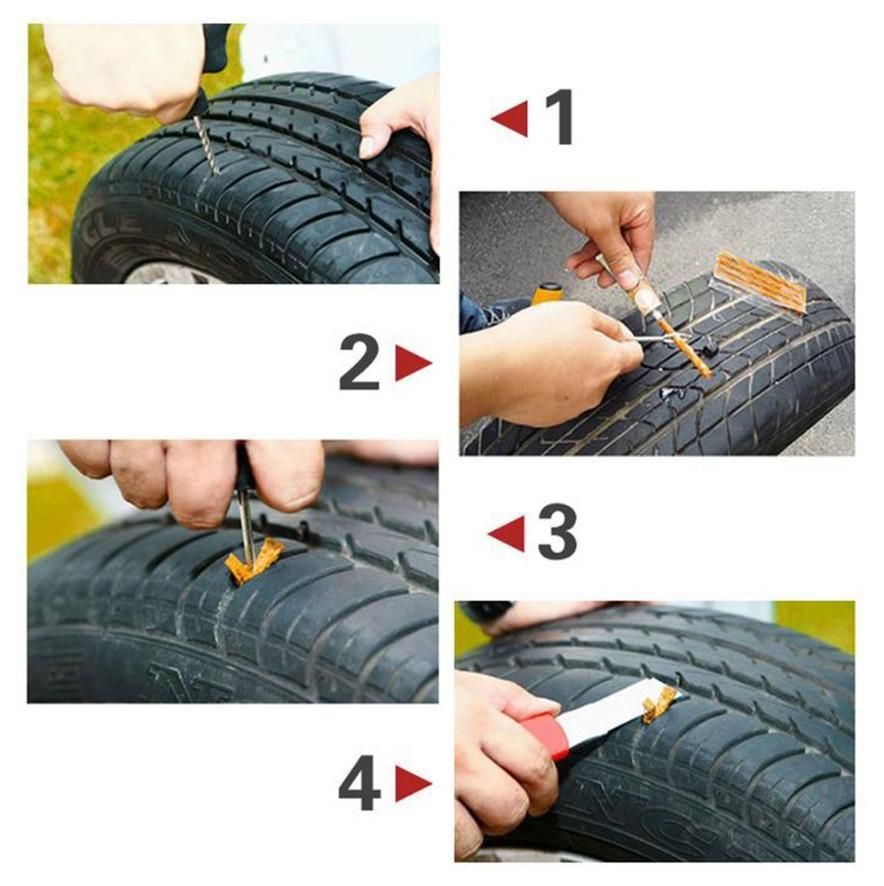 Financial Samurai is one of the largest independently-owned personal finance sites that started in 2009. I help people get rich and live the lifestyles they want.
Financial Samurai is one of the largest independently-owned personal finance sites that started in 2009. I help people get rich and live the lifestyles they want.
esportby.com
An easy way to quickly restore tire tightness and continue your journey. True, for this you need to have the right wheel repair kit with you.
Maxim Stroker
“Catching” a nail, screw or piece of wire in a wheel on the track is a trifling matter and somewhere even everyday. However, it turns into a serious "trouble" if this happens, for example, at night or a couple of tens of kilometers from the nearest tire fitting point. In theory, in this case, you need to put a spare wheel and go further. Although, in the case of a family trip on vacation, the process of digging it out from under a pile of junk in the trunk can turn into an adventure that deserves a separate story. Be that as it may, often the trouble does not come alone and the spare tire can be broken literally on the next kilometer. After all, where one carnation fell on the road, there may well be another one, and another, and another ...
Be that as it may, often the trouble does not come alone and the spare tire can be broken literally on the next kilometer. After all, where one carnation fell on the road, there may well be another one, and another, and another ...
With a couple of crippled wheels, you'll either have to wait an unknown amount of time for a tow truck to be sent in, or fix it yourself. Therefore, in a not particularly urbanized area, it makes sense to carry a repair kit with you to eliminate punctures in tubeless wheels. In principle, it can be of any manufacturer. The main thing when choosing it in the store is to make sure that the “drill” included in the repair kit is not very toothy and sharp. After all, his task is simply to clear a puncture hole in the tire, and not to break its metal cord. The second recommendation: the flagella, which are supposed to close the puncture hole, should be plump and reinforced with thin wire or plastic threads.
n-i.kiev.ua
And the third criterion for choosing a wheel repair kit is the obligatory presence of a tube of glue in it. Yes, yes: there are also “glueless” sets on sale, which are essentially useless.
Yes, yes: there are also “glueless” sets on sale, which are essentially useless.
So, we notice that the wheel is flat (or has already been blown off) and proceed to eliminate the problem. Most often, the hole in the rubber is not visible. Therefore, to begin with, we hang out the damaged wheel by raising the car on a jack, and inflate it with a pump or compressor to 3-4 atmospheres. If even after that it is not possible to detect damage by the whistle of escaping air, we methodically and consistently wet the entire surface of the wheel and look for bubbles at the puncture site.
Having found a puncture, we take the “drill” from the set and pierce the damaged area with it several times. So we clean the surface of the hole before gluing. Next, we smear the “drill” with glue from the set and again immerse it in the hole. We repeat this operation and, leaving the “drill” sticking out in the hole smeared with glue, we take out the flagellum and insert it halfway into the eye of another tool - the “overgrown needle” (sometimes called the “awl”), also available in the repair kit. We coat the flagellum with glue and, quickly pulling the “drill” out of the hole, insert our “needle” there so that the ends of the flagellum remain above the surface of the wheel tread. Next, we pull out the “needle-awl” and wait a few minutes until the glue grabs. After that, we pump up the wheel and carefully cut off the protruding tails of the flagellum with a knife. Everyone, you can move on.
We coat the flagellum with glue and, quickly pulling the “drill” out of the hole, insert our “needle” there so that the ends of the flagellum remain above the surface of the wheel tread. Next, we pull out the “needle-awl” and wait a few minutes until the glue grabs. After that, we pump up the wheel and carefully cut off the protruding tails of the flagellum with a knife. Everyone, you can move on.
Test drive of one of the best family minibuses
19881
Test drive of one of the best family minibuses
9000 19881 9000 9000 Avtovzglyad channel:wheels, summer tires, cheap cars, repairs, tires, winter tires, track
You hit: the tire is flat, but there is no spare tire. Modern tires are tubeless - if you managed to block a small leak with a sealing compound, pouring it into the valve, you can not look for a puncture.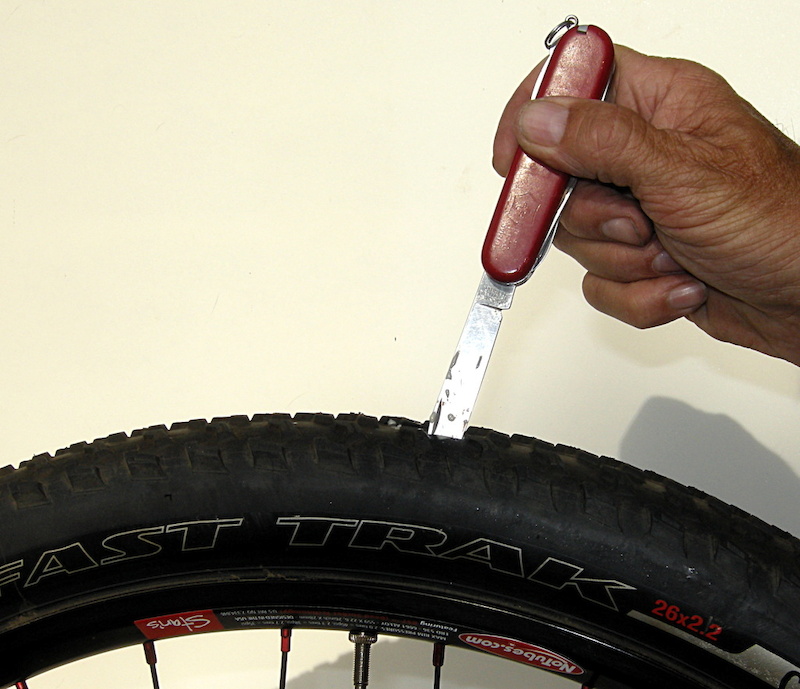 Effectively - plug the hole with a rubber band. It is injected from the outside with a special device (such kits are inexpensive on the market). But now we are talking about an extreme case - when a careless driver has nothing at hand to quickly repair a puncture.
Effectively - plug the hole with a rubber band. It is injected from the outside with a special device (such kits are inexpensive on the market). But now we are talking about an extreme case - when a careless driver has nothing at hand to quickly repair a puncture.
The technique is not new, but effective: we move the tire bead using the weight of the car and the force of the jack.
The technique is not new, but effective: we move the bead of the tire using the weight of the car and the force of the jack.
A small hole can be plugged by screwing a self-tapping screw into it. You can take it, for example, from the trunk lining. Another option, if the puncture is small: pour half a liter of water into the tire (with a pump through the valve) so that it slows down the air outlet. But periodically you will have to pump up the wheel.
Approximately ten cubes of gasoline, a torch, an explosion - and the board sits still!
Approximately ten cubes of gasoline, a torch, an explosion - and the board sits still!
To seal a large hole, the tire will have to be removed from the rim, at least on one side. But first, move both tire beads deep into the rim groove. Experienced people carry a piece of steel angle and a heavy hammer for such a case. Or they move it with a jack, resting its heel against the sidewall of the tire, and the shelf against the threshold of the car. Next, installers need to drag the desired bead over the rim flange, and only after that you can take on repair fungi, glue and patches.
But first, move both tire beads deep into the rim groove. Experienced people carry a piece of steel angle and a heavy hammer for such a case. Or they move it with a jack, resting its heel against the sidewall of the tire, and the shelf against the threshold of the car. Next, installers need to drag the desired bead over the rim flange, and only after that you can take on repair fungi, glue and patches.
The puncture has been repaired - but how to return the tire to the rim shelves? Not everyone has a high-performance electric compressor with them. And in order to use a conventional pump, you will have to seal the gaps as much as possible - for example, pull the tire around the circumference with ropes. If the sides hit the hump and the pressure began to rise, the problem is solved. In practice, these methods require manual dexterity. It's easier to land the tire with a light blast. This requires 10–15 g of gasoline. Pour a few milliliters of fuel inside the tire, then, so that it evaporates better, we roll the wheel. We put it on its side and, pressing on the sidewall, bring the flame to the gap. But not a match, but a torch! There will be a pop - and the tire is in place. A typical mistake is to pour too much gasoline: instead of popping, a fire will break out. We extinguish, we air ...
We put it on its side and, pressing on the sidewall, bring the flame to the gap. But not a match, but a torch! There will be a pop - and the tire is in place. A typical mistake is to pour too much gasoline: instead of popping, a fire will break out. We extinguish, we air ...
“Inflate” the tire with a watering hose. The matter requires patience, but on such a wheel you will reach the place of repair.
"Inflate" the tire with a garden hose. The matter requires patience, but on such a wheel you will reach the place of repair.
When the hole is in the knuckle, the tire cannot be saved. Unless you insert a camera into the tire. From the inside, it is useful to cover the hole with a "coat" of a couple of layers of rubber or with a bandage cut from the sidewall of a tire lying on the side of the road - there is a lot of this goodness along the roads. This will protect the chamber from sand and reduce the chance of further tearing. And if it's not far from the purpose of the trip? On a flat tire, you can drive 15–20 km on asphalt at speeds up to 40 km/h before it finally falls apart. We talked about this experiment in ZR, 2009, No. 7.
And if it's not far from the purpose of the trip? On a flat tire, you can drive 15–20 km on asphalt at speeds up to 40 km/h before it finally falls apart. We talked about this experiment in ZR, 2009, No. 7.
But what if there is no camera? Then turn on the fantasy. Someone "fills" the tire with a watering hose; all sorts of rags, sponge rubber from old seats, plastic film, linoleum strips, sidewalls cut from old tires, etc. will be used. With such stuffing, tires will wrinkle less on the go. But forget about driving in normal mode - slowly, extremely carefully, we drive to the nearest tire shop.
Travel set: wedges, jack, pry bars, wheel wrench, hammer, gloves, corners, compressor. Do not forget repair fungi, self-vulcanizing patches and, of course, a valve cap with a head that is used to unscrew the spool. There are usually no such caps on the wheels of modern cars, but if you look, it may come in handy.
Travel set: stop wedges, jack, pry bars, wheel wrench, hammer, gloves, corners, compressor. Do not forget repair fungi, self-vulcanizing patches and, of course, a valve cap with a head that is used to unscrew the spool. There are usually no such caps on the wheels of modern cars, but if you look, it may come in handy.
Do not forget repair fungi, self-vulcanizing patches and, of course, a valve cap with a head that is used to unscrew the spool. There are usually no such caps on the wheels of modern cars, but if you look, it may come in handy.
CARE OF THE WHEELS, RULES OF DISMANTLING AND ASSEMBLY
— Not all tire damage can be repaired without loss of its qualities. Drive in such a way that the risk of fatal injury is minimized. On a long journey, take a camera in reserve - it can come in handy.
- Monitor the condition of the wheelbrace and jack. Cracks or metal extrusion, heavily worn threads, tight rotation despite lubrication are unacceptable!
— Before jacking up the vehicle, secure the wheels on the opposite side. Stoppers under the support wheels - wedges, stones, etc. - should not slip along the road. To prevent the machine from sliding to the side, it is better to place the support wheels in shallow ruts or pavement potholes.
- If you have to work on soft ground or snow, place a wider support under the heel of the jack - for example, a piece of durable board.